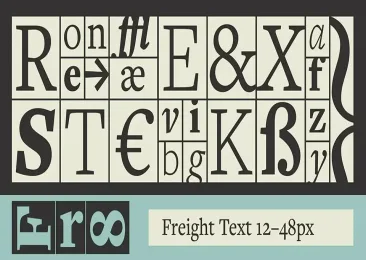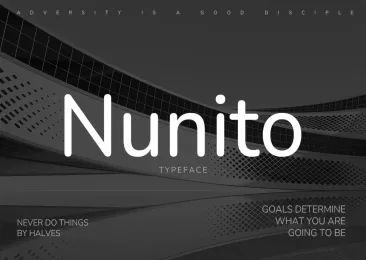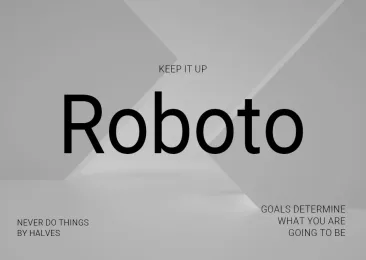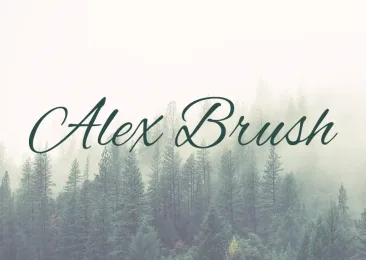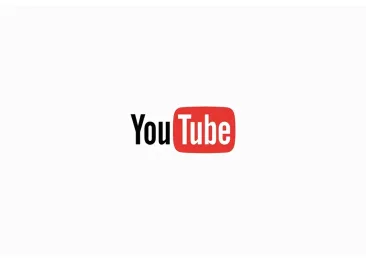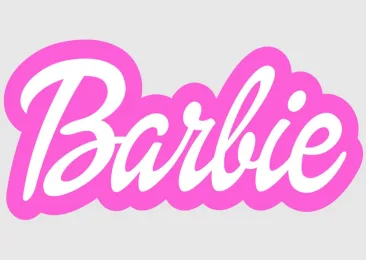Best Fonts For Logos
When it comes to creating a memorable and impactful logo, the choice of font plays a crucial role in conveying your brand’s personality and message. The right fonts for logos can instantly grab attention, establish trust, and leave a lasting impression on your target audience. With thousands of font options available, it can be overwhelming to select the perfect one for your brand. In this comprehensive guide, we’ll explore the best fonts for logos, categorized by style and characteristics, to help you make an informed decision. We’ll also provide tips on how to choose the right font for your brand and showcase examples of successful logo designs that utilize these fonts. Whether you’re a seasoned designer or a business owner looking to create a strong visual identity, this article will equip you with the knowledge and inspiration to choose the best fonts for logos that will elevate your brand to new heights.
Types of Fonts for Logos
Serif Fonts
Serif fonts are characterized by small lines or strokes attached at the end of letters. They are often seen as traditional, reliable, and professional. Brands that aim for a classic, trustworthy image often gravitate towards serif fonts. An example of a serif logo font is Times New Roman, which has been a staple in the print industry for decades.
Garamond: A classic serif font with elegant, old-style proportions, often used in high-end branding and publishing.
Baskerville: A transitional serif font with a timeless appeal, suitable for traditional and sophisticated brands.
Caslon: An old-style serif font with a warm, inviting appearance, often used in heritage brands and print media.
Bodoni: A modern serif font with high contrast between thick and thin strokes, creating a bold and dramatic look.
Didot: A high-contrast serif font with a sleek, luxurious appearance, often used in fashion and beauty branding.
Sans Serif Fonts
Sans serif fonts, as the name suggests, lack the small lines that serif fonts have. They are seen as modern, clean, and straightforward. Brands that aim for a contemporary, minimalist image often choose sans serif fonts. An example of a sans serif logo font is Helvetica, which has been widely used in corporate branding and design.
Futura: A geometric sans serif font with a clean, futuristic look, often used in modern and innovative brands.
Avenir: A humanist sans serif font with a warm, friendly appearance, suitable for a wide range of brands.
Gotham: A geometric sans serif font with a strong, confident look, often used in branding for urban and masculine products.
Proxima Nova: A modern sans serif font with a versatile appearance, suitable for digital and print applications.
Museo Sans: A geometric sans serif font with a distinctive, rounded appearance, often used in creative and tech-savvy brands.
Script Fonts
Script fonts mimic handwriting and have a fluid, cursive-like appearance. They are seen as elegant, creative, and personal. Brands that aim for a luxurious, artistic image often choose script fonts. An example of a script logo font is Parisienne, which has a romantic, calligraphic style.
Lucida Calligraphy: A formal script font with a classic calligraphic style, often used in wedding invitations and high-end stationery.
Scriptina: A decorative script font with an ornate, flourishing appearance, suitable for luxury brands and special occasions.
Lavanderia: A casual script font with a hand-lettered look, often used in branding for artisanal products and small businesses.
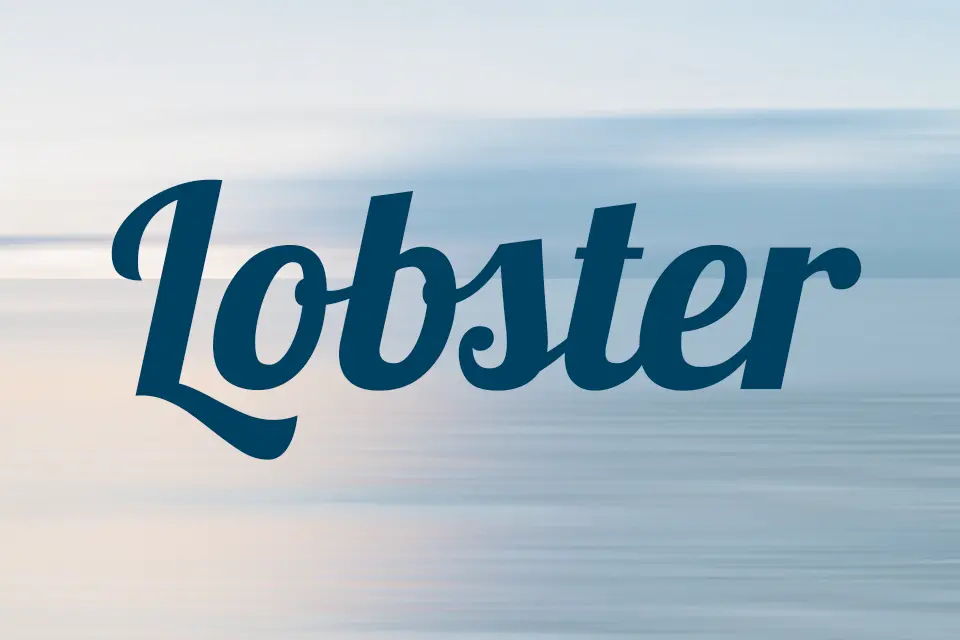
A playful script font with a retro, vintage vibe, suitable for brands targeting a younger audience.
Satisfy: A flowing script font with a relaxed, informal appearance, often used in branding for food and beverage products.
Display Fonts
Display fonts are decorative and highly stylized, making them perfect for creating eye-catching and memorable logos. These fonts often feature unique shapes, exaggerated forms, and intricate details, allowing brands to make a bold statement and stand out from the competition. An example of a display logo font is Lobster, which has a playful, retro appearance.
Bevan: A slab serif display font with a strong, attention-grabbing look, often used in branding for sports and entertainment.
Alfa Slab One: A bold slab serif display font with a vintage, western-inspired appearance, suitable for brands targeting a rugged, masculine audience.
Bangers: A quirky display font with a retro, grunge-inspired look, often used in branding for music festivals and alternative products.
Monoton: A unique display font with a distorted, glitch-like appearance, suitable for brands targeting a tech-savvy, experimental audience.
Abril Fatface: A bold display font with a vintage, letterpress-inspired look, often used in branding for artisanal products and craft-focused businesses.
Handwritten Fonts
Handwritten fonts have a personal, authentic feel that can add warmth and character to a logo design. These fonts are often used in branding for small businesses, food and beverage products, and brands targeting a younger audience. An example of a handwritten logo font is Pacifico, which has a casual, playful appearance.
Kalam: A handwritten font with a relaxed, informal look, often used in branding for food and beverage products.
Indie Flower: A whimsical handwritten font with a childlike charm, suitable for brands targeting a young audience or promoting creativity.
Shadows Into Light: A flowing handwritten font with a calligraphic style, often used in branding for wedding-related products and services.
Architects Daughter: A casual handwritten font with a hand-lettered look, suitable for brands promoting a DIY or crafty image.
Reenie Beanie: A quirky handwritten font with a retro, typewriter-inspired appearance, often used in branding for music festivals and alternative products.
Geometric Fonts
Geometric fonts are characterized by clean, minimalist shapes and a focus on symmetry. They are often seen as modern, innovative, and tech-savvy. Brands that aim for a sleek, futuristic image often choose geometric fonts. An example of a geometric logo font is Avenir, which has a clean, humanist appearance.
Circular: A geometric sans serif font with a modern, minimalist look, often used in branding for tech companies and startups.
Gilroy: A geometric sans serif font with a friendly, approachable appearance, suitable for a wide range of brands.
Poppins: A geometric sans serif font with a versatile, multilingual design, often used in branding for international companies and digital products.
Montserrat: A geometric sans serif font with a distinctive, rounded appearance, suitable for branding in the creative and tech industries.
Raleway: A geometric sans serif font with a clean, elegant look, often used in branding for fashion and design-focused brands.
Vintage Fonts
Vintage fonts have a nostalgic, retro feel that can add character and authenticity to a logo design. These fonts are often used in branding for heritage brands, artisanal products, and brands targeting a vintage-loving audience. An example of a vintage logo font is Satisfy, which has a relaxed, informal appearance.
Playfair Display: A vintage-inspired serif font with a high-contrast, dramatic look, often used in branding for luxury products and services.
Abril Fatface: A bold display font with a vintage, letterpress-inspired appearance, suitable for artisanal products and craft-focused businesses.
Amatic SC: A playful script font with a retro, hand-lettered look, often used in branding for food and beverage products and children’s brands.
Pacifico: A casual script font with a vintage, surf-inspired appearance, suitable for brands targeting a young, laid-back audience.
Permanent Marker: A handwritten font with a vintage, typewriter-inspired look, often used in branding for music festivals and alternative products.
Minimalist Fonts
Minimalist fonts are characterized by clean lines, simple shapes, and a focus on legibility. They are often seen as modern, sophisticated, and timeless. Brands that aim for a sleek, elegant image often choose minimalist fonts. An example of a minimalist logo font is Montserrat, which has a distinctive, rounded appearance.
Roboto: A minimalist sans serif font with a clean, modern look, often used in branding for tech companies and digital products.
Lato: A minimalist sans serif font with a friendly, approachable appearance, suitable for a wide range of brands.
Source Sans Pro: A minimalist sans serif font with a versatile, multilingual design, often used in branding for international companies and digital products.
Nunito: A minimalist sans serif font with a distinctive, rounded appearance, suitable for branding in the creative and tech industries.
Rubik: A minimalist sans serif font with a clean, elegant look, often used in branding for fashion and design-focused brands.
Decorative Fonts
Decorative fonts are highly stylized and feature unique shapes, intricate details, and exaggerated forms. They are perfect for creating eye-catching and memorable logos that stand out from the competition. An example of a decorative logo font is Lobster, which has a playful, retro appearance.
Pacifico: A casual script font with a vintage, surf-inspired look, suitable for brands targeting a young, laid-back audience.
Permanent Marker: A handwritten font with a vintage, typewriter-inspired appearance, often used in branding for music festivals and alternative products.
Bungee: A bold display font with a retro, grunge-inspired look, suitable for brands targeting a young, edgy audience.
Monoton: A unique display font with a distorted, glitch-like appearance, often used in branding for tech-savvy and experimental brands.
Megrim: A quirky display font with a retro, comic book-inspired look, suitable for brands targeting a young, playful audience.
Multilingual Fonts
Multilingual fonts are designed to support multiple languages and scripts, making them ideal for international brands and companies with a global audience. These fonts often feature a clean, minimalist appearance and a focus on legibility across different writing systems. An example of a multilingual logo font is Poppins, which has a versatile, multilingual design.
Noto Sans: A minimalist sans serif font that supports over 100 languages and scripts, often used in branding for international companies and digital products.
Fira Sans: A geometric sans serif font with a clean, modern look and support for Latin, Cyrillic, and Greek scripts, suitable for a wide range of international brands.
Titillium Web: A minimalist sans serif font with a distinctive, rounded appearance and support for Latin and Cyrillic scripts, often used in branding for creative and tech-focused brands.
Raleway: A geometric sans serif font with a clean, elegant look and support for Latin and Cyrillic scripts, suitable for fashion and design-focused brands with a global audience.
Montserrat: A geometric sans serif font with a versatile, multilingual design and support for Latin, Cyrillic, and Greek scripts, often used in branding for international companies and digital products.
Conclusion
Choosing the right fonts for logos is a crucial step in creating a strong and memorable brand identity. By understanding the different types of fonts and their characteristics, you can select the perfect one that aligns with your brand’s personality and resonates with your target audience. Remember to keep your logo font simple, legible, and scalable, and consider how it will look across various applications and mediums.When selecting fonts for logos, it’s essential to strike a balance between creativity and professionalism. Avoid using too many different fonts or overly decorative ones, as this can make your logo appear cluttered and confusing. Instead, focus on choosing one or two fonts that work well together and complement your brand’s overall aesthetic.Ultimately, the best fonts for logos are those that effectively communicate your brand’s message and values while leaving a lasting impression on your audience. By following the guidelines and examples provided in this article, you’ll be well on your way to choosing the perfect fonts for logos that will elevate your brand to new heights.
FAQs
- What are the most popular fonts for logos?
Some of the most popular fonts for logos include Helvetica, Futura, Garamond, Bodoni, and Avenir. These fonts are widely used across various industries due to their clean, modern, and versatile appearances. - How do I choose the right font for my logo?
When choosing a font for your logo, consider your brand’s personality, target audience, and the message you want to convey. Think about whether you want a classic, modern, or decorative look, and choose a font that aligns with your brand’s values and aesthetic. It’s also important to ensure that the font is legible and scalable across various applications. - Can I use any font for my logo?
While you can technically use any font for your logo, it’s important to ensure that you have the necessary licenses and permissions to use that font commercially. Many fonts are subject to licensing restrictions, so it’s crucial to review the terms of use before incorporating them into your logo design. - How many fonts should I use in my logo?
It’s generally recommended to use no more than two fonts in your logo design. Using too many fonts can make your logo appear cluttered and confusing. Instead, focus on choosing one or two complementary fonts that work well together and enhance your brand’s overall aesthetic. - Can I modify a font for my logo?
Yes, you can modify a font for your logo design, but it’s important to ensure that you have the necessary permissions and licenses to do so. Many font licenses restrict the ability to modify or alter the font without prior approval. If you plan to modify a font for your logo, it’s best to consult with a professional designer or the font’s creator to ensure that you are following the appropriate guidelines and restrictions. - How important is font choice in logo design?
Font choice is a critical element of logo design. By changing your logo font, you can completely change your brand’s mood and message. Your font even has the power to influence your customer’s thoughts and emotions. A well-chosen font can make your logo more memorable, legible, and impactful, while a poorly chosen font can detract from your brand’s overall aesthetic and message.
